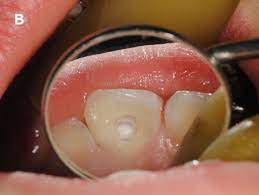Root canal treatments have long been used to preserve natural teeth affected by deep decay or injury. In recent years, regenerative endodontics has expanded the options available to patients seeking more biologically based care. An endodontist trained in this advanced technique works to stimulate tissue repair inside the tooth, supporting natural function instead of simply removing infected material. By encouraging healing from within, regenerative therapy opens the door to longer-lasting results and a broader range of treatment possibilities.
Preserving the Natural Structure of the Tooth
Traditional root canal therapy involves removing damaged or infected pulp tissue and replacing it with a filling material. While this approach is effective, it does not restore the living tissue inside the tooth. Regenerative endodontics offers an alternative by focusing on preserving or regenerating the tissue within the root canal system. For patients with immature or traumatized teeth, maintaining natural structure and vitality supports continued root development and strengthens long-term tooth integrity. Working with an endodontist skilled in regenerative methods can lead to improved outcomes, particularly for younger patients.
Teeth treated through conventional root canal procedures can become more brittle over time, especially if the pulp was removed entirely. Without living tissue to nourish the tooth from within, the risk of fractures or reinfection may increase. Regenerative techniques allow for the possibility of restoring some of this lost vitality by promoting new tissue growth. This reduces the likelihood of complications later and may improve the tooth’s ability to respond to normal function. A regenerative approach helps patients retain their natural teeth in a more stable condition.
Supporting Continued Root Development in Young Patients
One of the most promising uses of regenerative endodontics involves treating young patients with underdeveloped roots. Trauma or infection can interrupt root formation, leaving the tooth vulnerable. With regenerative therapy, an endodontist can create an environment inside the tooth that encourages further development. This not only increases root length but also thickens the walls, which improves structural support. The ability to continue natural growth reduces the need for future dental interventions and offers a better long-term outlook for children and adolescents.
Avoiding More Invasive Dental Treatments
When deep infection or pulp damage occurs, tooth extraction may seem like the only option—especially if the root is underdeveloped or difficult to access. Regenerative endodontics provides a non-surgical path that can delay or even prevent the need for extraction. Rather than removing the tooth and relying on a prosthetic replacement, patients have the option of healing the tissue and preserving the natural tooth. This approach not only avoids more invasive procedures but also maintains the surrounding bone and gum structure, which contributes to overall oral health.
Because regenerative endodontic procedures use biologically active materials and focus on healing from within, they align more closely with the body’s natural processes. The method often involves the use of growth factors or scaffold materials that promote cell migration and tissue regeneration. These tools help activate the body’s own repair mechanisms in a controlled environment. For patients who are sensitive to synthetic materials or concerned about long-term compatibility, regenerative techniques offer a more natural pathway to recovery.
While traditional root canal procedures are designed to eliminate pain and preserve the exterior of the tooth, regenerative options go further by attempting to maintain or restore some internal vitality. Teeth that retain living tissue may better withstand daily wear and adapt to changes over time. A tooth treated with regenerative care can respond more like a healthy, untreated tooth, which enhances comfort and resilience. An endodontist may recommend this option to patients who qualify based on age, tooth structure, and the nature of the injury or infection.
Visit an Endodontist
As regenerative endodontics becomes more widely adopted, patients benefit from new techniques that combine established dental science with innovation. Providers use advanced imaging, biocompatible materials, and research-based protocols to guide treatment. These methods require detailed planning and skilled execution, which is why selecting a qualified endodontist is a key step. The combination of technology and biological principles offers patients a sophisticated option for care that addresses more than just symptoms—it supports true tissue regeneration.
- How To Create a Personalized Weight Loss Plan
- The Importance of Foot Care for Diabetes: Prevention Tips You Need
- Cutting vs. Polishing Tools in Dentistry: Key Differences Every Dental Professional Should Know
- What Are the Symptoms of Depression?
- Understanding the Role of Neurologists in Managing Chronic Headaches


Leave a Reply